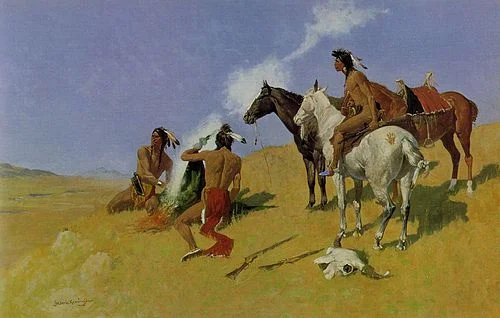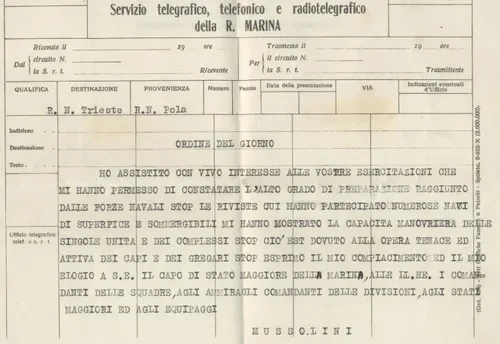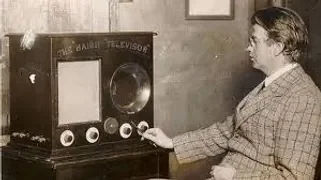-
 Smoke signals were a very ancient method of communication, with no defined start or end date as a formal technology, but they are known to have been used as early as 150 BC by the Greeks and also in ancient China along the Great Wall to warn of invasions. They are also known to have been used by pioneers of Western films and by Native Americans, and were replaced by telecommunication technologies that emerged around the XVII and XIX. soldiers used smoke signals in wars.
Smoke signals were a very ancient method of communication, with no defined start or end date as a formal technology, but they are known to have been used as early as 150 BC by the Greeks and also in ancient China along the Great Wall to warn of invasions. They are also known to have been used by pioneers of Western films and by Native Americans, and were replaced by telecommunication technologies that emerged around the XVII and XIX. soldiers used smoke signals in wars. -
 Letters became widely used in the 19th century with the postal service to send written messages over long distances. If someone lived far away, you put the letter in an envelope, sealed it, and placed it in a mailbox so the postman could deliver it. Telegrams, which appeared in the 1840s thanks to Samuel Morse’s telegraph, were used to send short and urgent messages much faster sometimes delivered on paper within a few hours.
Letters became widely used in the 19th century with the postal service to send written messages over long distances. If someone lived far away, you put the letter in an envelope, sealed it, and placed it in a mailbox so the postman could deliver it. Telegrams, which appeared in the 1840s thanks to Samuel Morse’s telegraph, were used to send short and urgent messages much faster sometimes delivered on paper within a few hours. -
The microphone had its beginnings in the 1870s, with the independent work of David Edward Hughes in England and Émile Berliner in the United States, who developed the first electric carbon microphone between 1876 and 1878, laying the foundation for telephony and sound recording.
-
A radio antenna is a metallic component used to transmit or receive electromagnetic waves, such as radio waves, to communicate information at the speed of light. Antennas act as interfaces between electrical energy and electromagnetic waves, converting electrical signals into radio waves for transmission, and the received radio waves into electrical signals for use in receivers.
-
 A TV, also known as television or TV, is a system for transmitting and receiving moving images and sound synchronized remotely, using electromagnetic waves, cables, satellites or the Internet.
A TV, also known as television or TV, is a system for transmitting and receiving moving images and sound synchronized remotely, using electromagnetic waves, cables, satellites or the Internet.
This system allows the dissemination of live or recorded content, such as news programs, series, movies, sports or entertainment, through different platforms such as terrestrial, cable, satellite or IPTV television. -
Commercial satellite radio began its development in the 1990s, with companies such as Sirius and XM applying to the FCC for frequencies for their digital broadcasts, and in 1999, WorldSpace made the first commercial transmissions in Africa and the Middle East, while the first in the United States occurred in 2001.
-
 A blog is a type of website that publishes new content regularly, often organized chronologically, while a website is a more general platform that presents more static information about a company, service, or person. There is no single "creator of blogs" as blogs evolved collectively.
A blog is a type of website that publishes new content regularly, often organized chronologically, while a website is a more general platform that presents more static information about a company, service, or person. There is no single "creator of blogs" as blogs evolved collectively. -
Digital radio is an audio broadcasting system characterized by the transmission of digital signals. Currently, there are several well-known digital broadcasting systems with worldwide impact, for example: IBOC (In-band On-channel), DAB (Digital Audio Broadcasting), and DRM (Digital Radio Mondiale). Some digital TV systems are also well-suited to broadcasting audio. (This experiment is not over, it works for future generations)
-
Social media are digital platforms that allow users, businesses, and institutions to connect, interact, and share content such as text, images, and videos, creating virtual communities based on common interests. They serve to maintain and build relationships, exchange knowledge, stay informed, entertain, and even conduct business transactions. Some of the most popular include Facebook, YouTube, WhatsApp, Instagram, and TikTok. (This too)
-
A podcast is an episodic series of digital content, primarily audio, that can be downloaded or listened to online on demand, offering the user the flexibility to consume it whenever they want. The term combines the words "iPod" and "broadcast," reflecting its origin as audio files distributed for portable players. (this one is not finished either and continues to evolve!!)
